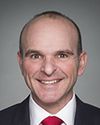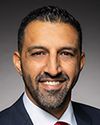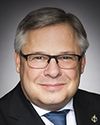Thank you, Madam Chair and committee.
I guess I would not be here today if I felt the commission had done properly everything it should have. When it first proposed this to the riding of Yellowhead, it was to increase it by about 12%, and I'm talking population, not area. That's about the only significant change.
What it has done, though, is to completely rearrange the entire riding, so that now I have 45% of the original riding and about 55% that's brand new. That, to me, is a substantial change. That is why I am here today to argue these points: There's no more continuity in any shape or form from north to south. I have essentially Calgary residents and, seven hours away, Grand Cache, a small coal-mining town, but also forestry, oil and gas, so quite a differentiation between them and the tourist areas on the west side, with Jasper and Banff national parks, and then Kananaskis Country.
When I start looking at the rationale, the commission itself didn't seem to make sense when it made the changes. When it first talked about continuity, that made sense. What it did was to combine certain ridings or make a new riding in an area that didn't exist before in the proposal. Doing that really reconfigured all of Alberta. When I say it didn't make it consistent, I mean it tried to make sure certain counties were together, so then it chopped Yellowhead in half.
On one hand they say, “We want to keep counties together,” and on the other hand they say, “No, we'll divide them.” Rocky View County now has four MPs representing it, so that doesn't make sense. When they start looking at populations, everyone is trying to get around 116,000. Now they have variances from 121,500 all the way down to 110,000, so again they didn't follow their own mandate. Doing a lot of these things means there isn't the continuity that I thought there would be.
They want to change the name from Yellowhead to Jasper—Banff—Canmore. I want to maintain the name Yellowhead for the historical value as well as the significance of David Thompson, the explorer. His name was “Yellow Head” or “Tête Jaune” in French. Apparently, they spoke a lot more French back then than they do now in my riding. That's the historical significance behind it. This is the reason I want to put Yellowhead back together. It's hard to maintain the name of Yellowhead when you have Yellowhead County split in half.
That is my main proposal. I know for a fact that it still doesn't address what I'd like it to do. I'd prefer to go back to the original proposal. That made a lot more sense to me. By making these changes, yes, I'm affecting essentially five different ridings, but I have the full support of my fellow MPs. I'm not trying to make a change that will benefit one voter or one riding over another. Alberta, as you're well aware, is very strongly Conservative, so there isn't this, “Oh, my goodness, now we're trying to balance this out a little differently.” That's not going to be a factor.
Those are really my whole premises behind everything. I think I'll leave it there.
Oh, yes. Some mayors have also written letters giving their support as well.
Other than that, because I have full support and everything going through, I also feel that the boundary changes that I proposed will bring us to within 1,000 of that 116,000, so my recommendation comes a lot closer to what was desired as opposed to their proposal, which would be 5,000 to 6,000 over or under. As well, the boundary lines I've drawn make a lot more sense, with straight lines as opposed to all the curves and changes that way.
Thank you, Madam Chair.







